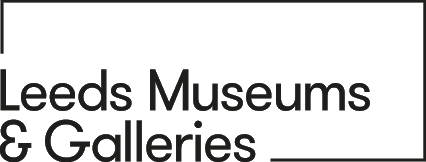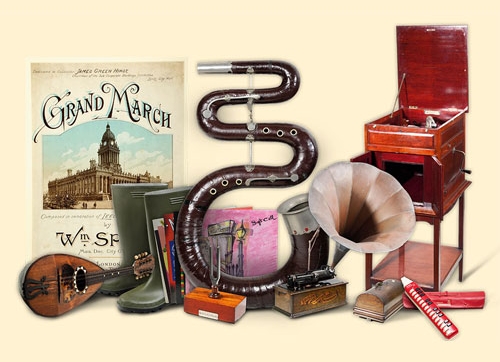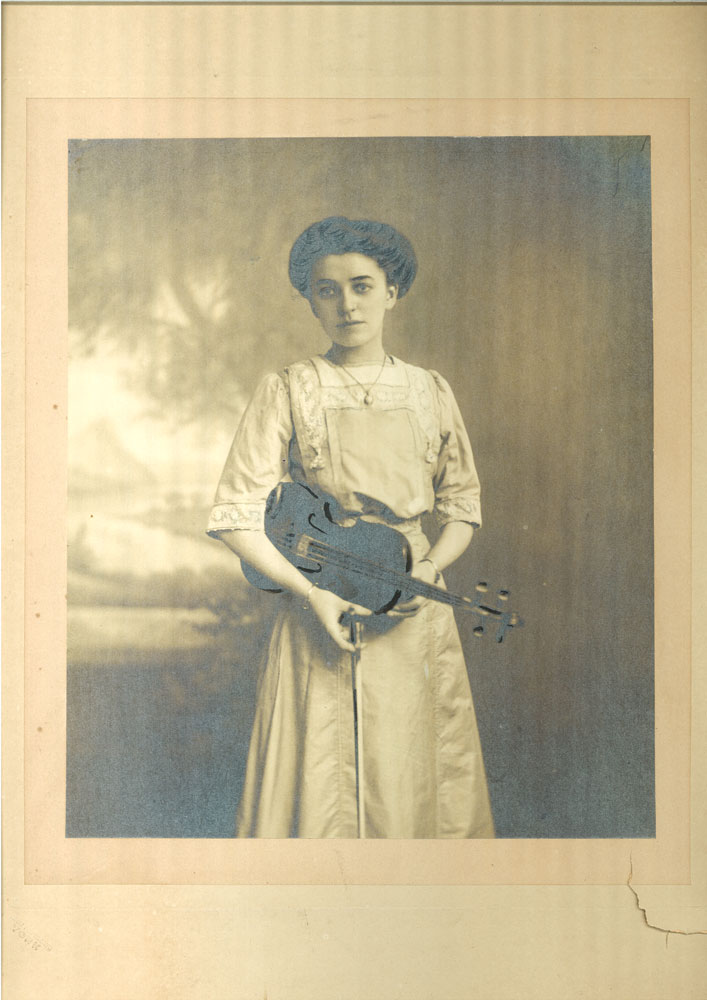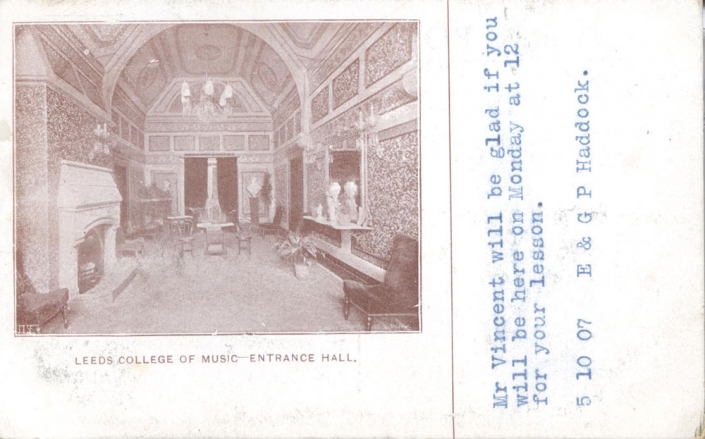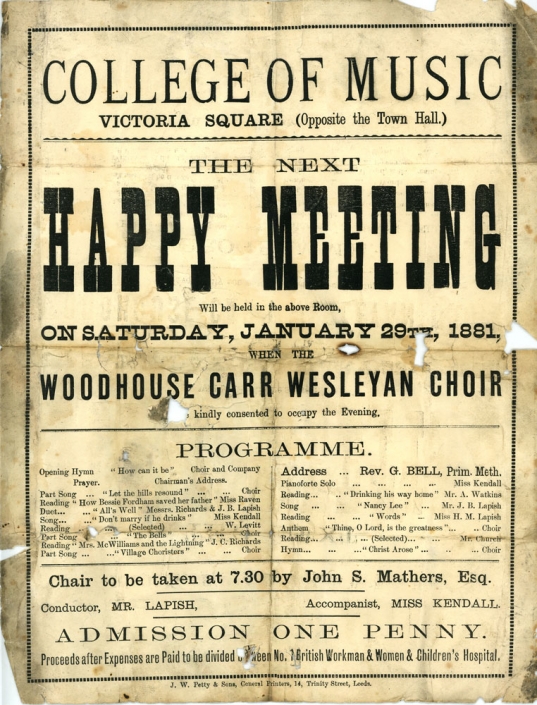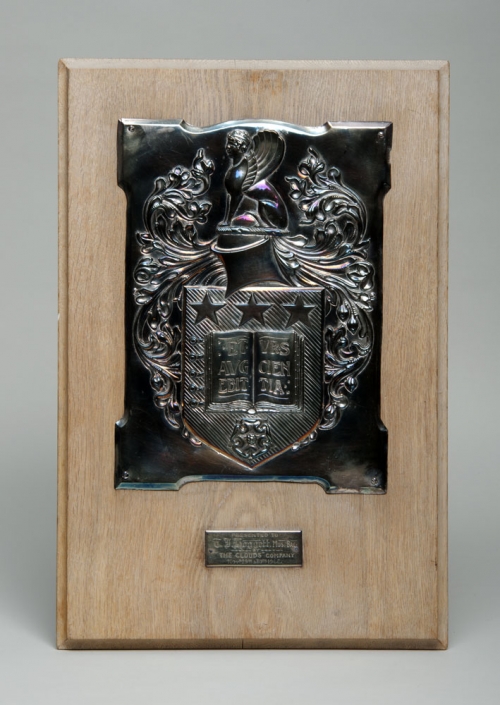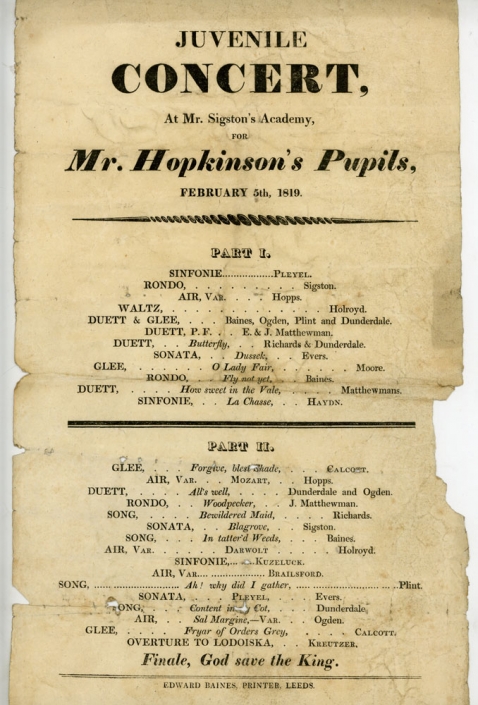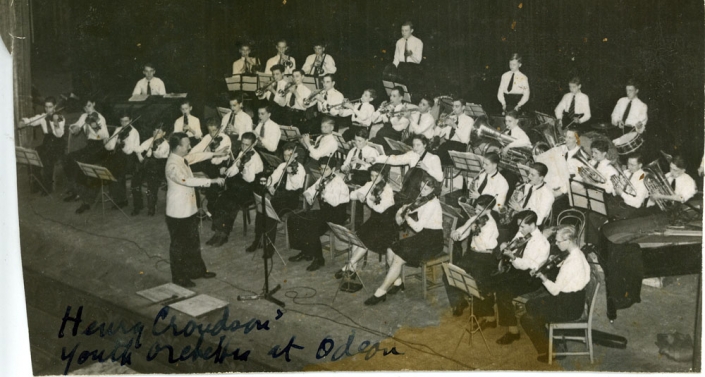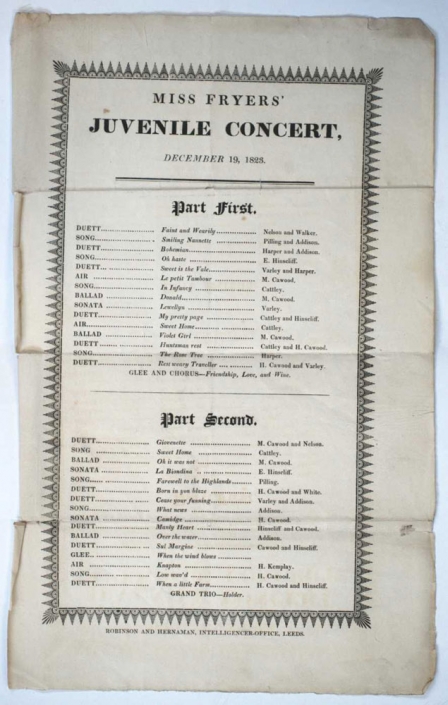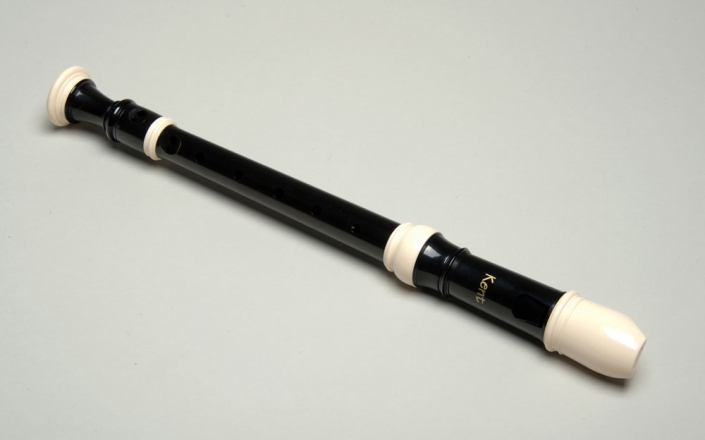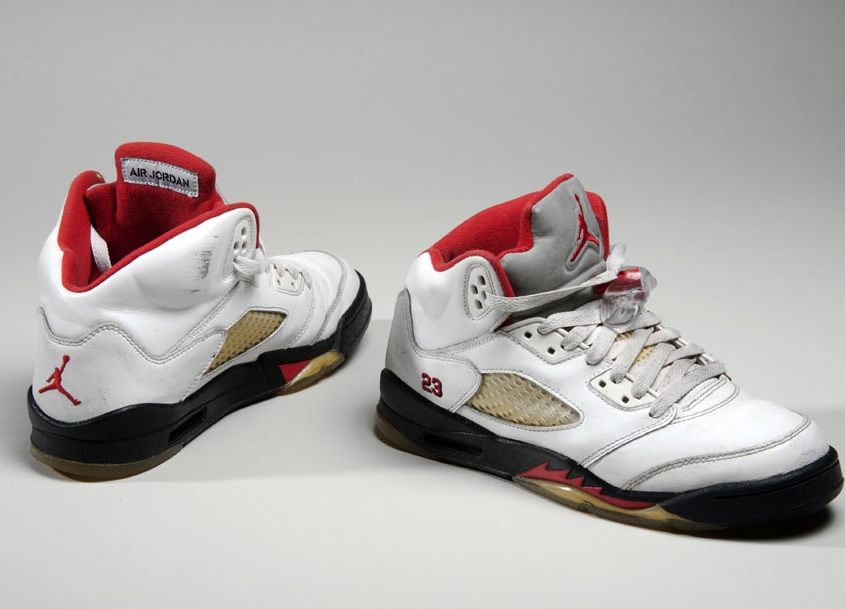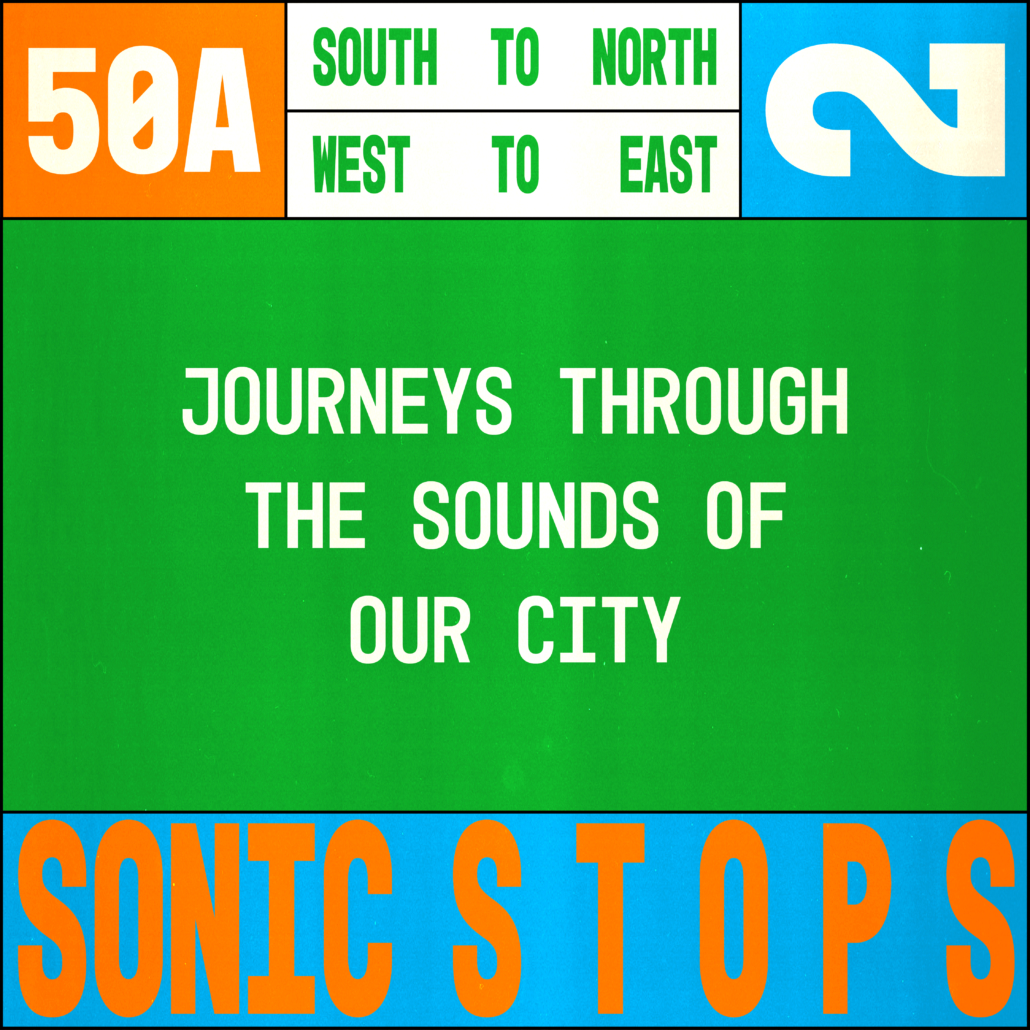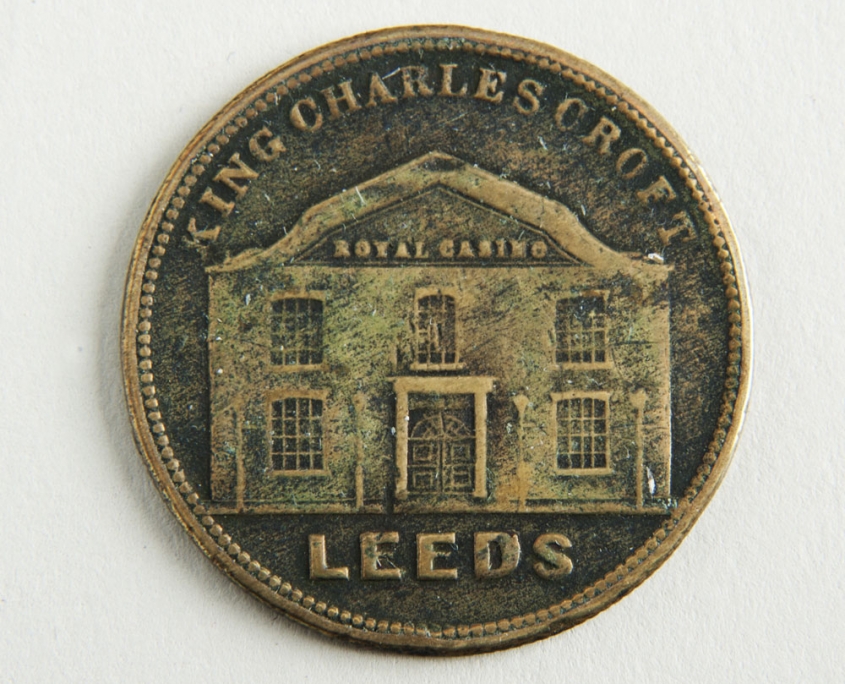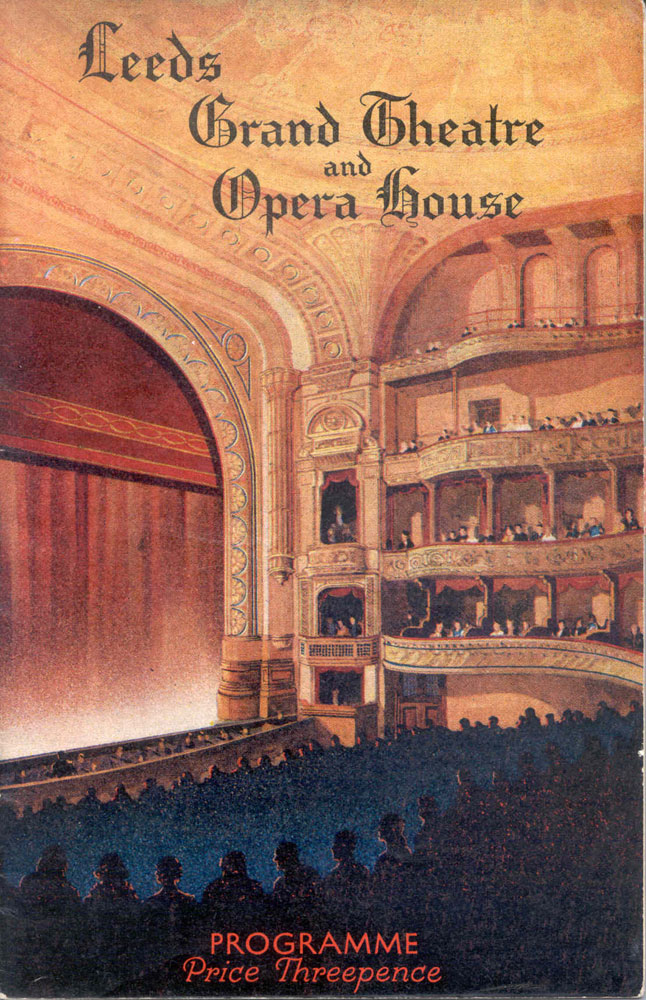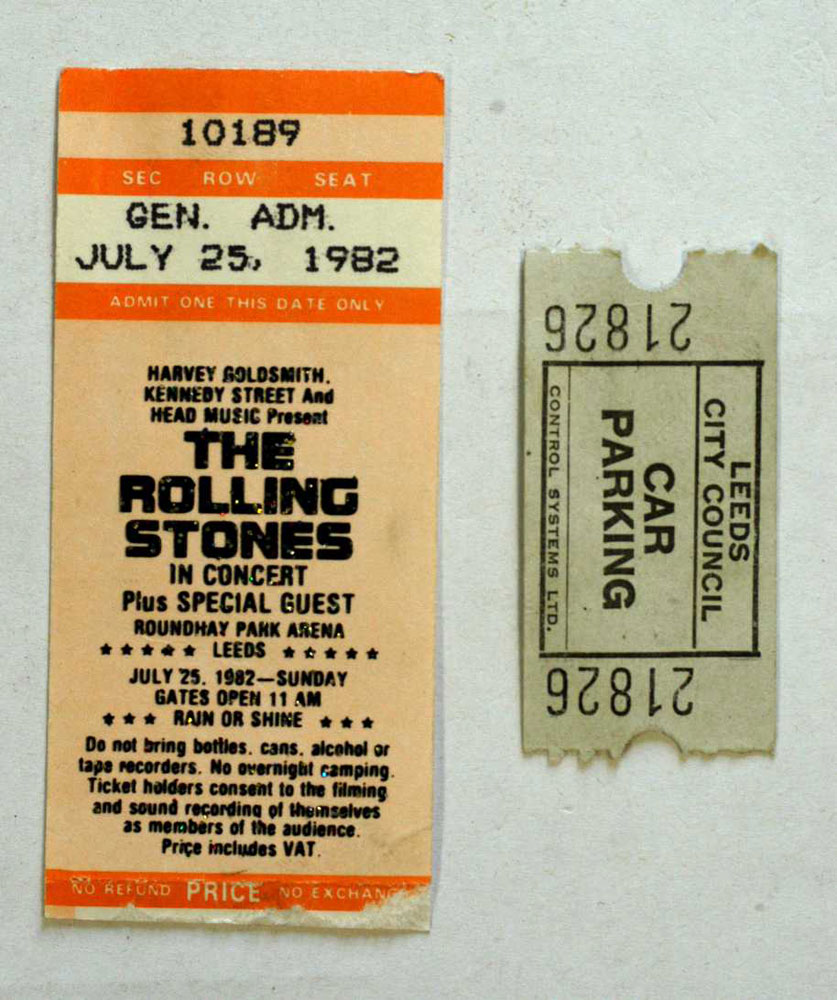This song, titled “This is Our Opening Day” was written for the grand ceremony to open Roundhay Park to the people of Leeds in 1872. The park was originally the private grounds of the mansion owned by the Nicholson family, but in 1871 the then mayor John Barran managed to raise the money to buy it as an open space for the people of Leeds. He invited Prince Arthur, Duke of Connaught (third son of Queen Victoria) to officially open the park and according to the song he was greeted by “ten thousand clear voices”. This recording was made specially for exhibition with just four clear voices, those of Nina Phelps, Flo Rivington, Marcus Dickson and Ben Palmer from Leeds University School of Music.
The first verse, which you can hear recorded, is a welcome to Prince Arthur. The second verse praises the Mayor and the Town Council who are “prudent and wise.”
The third verse praises the people of Leeds (provided they are not republicans!) –
“Now success to the park, now open and free,
Success to all famed for good deeds
May this work begun let republicans see
That people are loyal in Leeds
Then shout loyal people, shout far and wide
Hurrah for our commerce and laws!”
The words of this song are perhaps not the best example of beautiful poetry. The author T. Carlton was after all probably better at his day job of Estate Agent and shorthand teacher.
